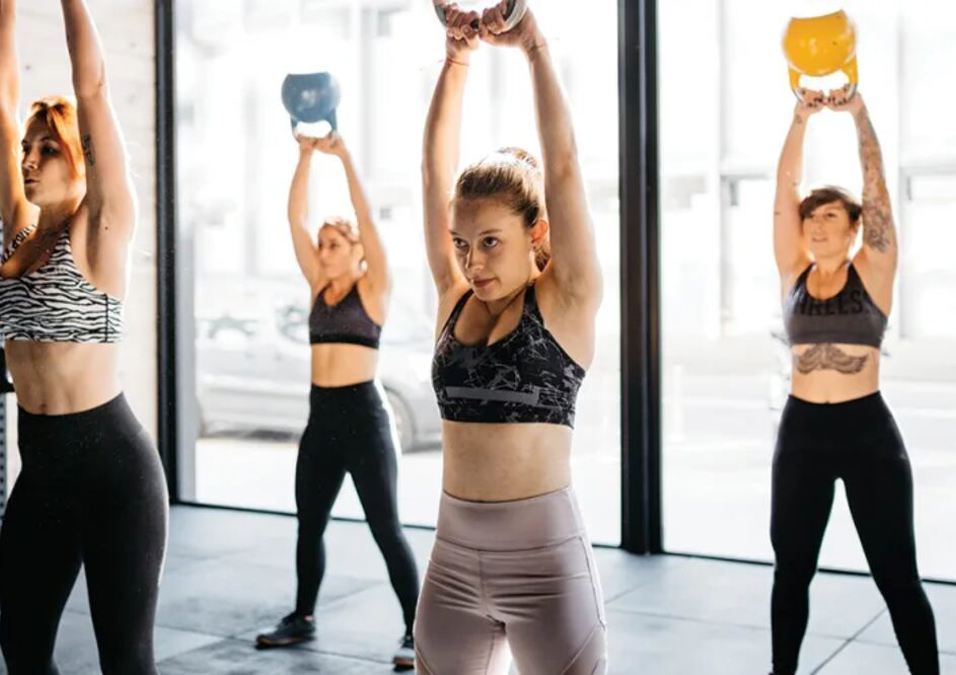Strength in Group Fitness: Tips

SIGN UP FOR YOUR FREE DAY PASS TODAY!
Many people move away from team sports as they age, no longer playing club soccer or high school volleyball.
However, group fitness classes have filled that gap for many women, offering a similar sense of community and physical activity.
These classes have become a staple for many women's schedules, complete with favorite studios, instructors, and workout buddies, creating a team-like atmosphere.
Group fitness combines movement with community support, which positively impacts mental and physical health, according to research.
To maximize the benefits of these classes and become an everyday athlete, I consulted two fitness experts for their tips.
-
Avoid Overdoing High-Intensity Classes
Classes like boot camps, spin, circuit training, Tabata, and kickboxing are popular for their potential to raise heart rates and efficiently burn fat and build muscle.
However, Alyssa Olenick, Ph.D., an exercise physiologist and sports nutritionist, warns against overdoing it.
Engaging in high-intensity workouts 5-6 times a week can reduce their effectiveness, turning them into moderate-intensity workouts.
This routine can also lead to using the same weights repeatedly or not giving your all because you have another class the next day. It's crucial to balance intense workouts with rest days to maintain peak fitness.
-
Diversify Your Workouts
Just like team practices vary, so should your workout routine. Mixing up exercises helps in the long run.
Instructor and studio co-owner Thalia Bardell notes that while it's great to love a particular workout style, your body eventually adapts, and the challenge decreases.
Incorporating longer, slower cardio sessions or heavier strength training can provide a balanced routine. For those committed to group classes, planning can help introduce variety.
For instance, adding HIIT or cycling classes can enhance cardio, while strength training, barre, or Pilates can increase overall fitness.
-
Challenge Yourself with Heavier Weights
Without increasing the weights you lift, progress can stall. Muscle development requires stress and tension, which heavier weights provide.
Bardell suggests that if you've used the same weights for over a year, it's time to increase them. Moving slowly through exercises, as Olenick advises, can help focus on strength rather than speed.
Consider classes or gym sessions that emphasize heavy lifting for continuous improvement.
-
Participate Actively in Classes
Bardell points out that relying solely on the class structure for a challenge can limit progress. Simply attending isn't enough; pushing yourself during the class is key.
The synergy between personal effort and the class structure can drive results.
-
Ensure Proper Nutrition
Under-consuming protein and carbohydrates can impede progress and recovery. Olenick observes many women not consuming enough to support their training intensity.
Most women require more protein than they think, with a minimum of 100 grams daily recommended. Protein aids muscle synthesis, essential for maintaining and building lean mass.
Adding creatine supplements can further enhance energy and recovery. Carbohydrates are equally important, providing essential glucose for workouts.
In Summary
Group fitness offers a fantastic path to staying active, strengthening friendships, and improving strength. However, routines can become stagnant.
Keep attending your preferred classes but introduce new training methods and heavier weights. Remember, your fellow class-goers are there for support, sharing similar fitness goals.
Source: mindbodygreen
The opinions shared in the GymNation blog articles are solely those of the respective authors and may not represent the perspectives of GymNation or any member of the GymNation team.































































